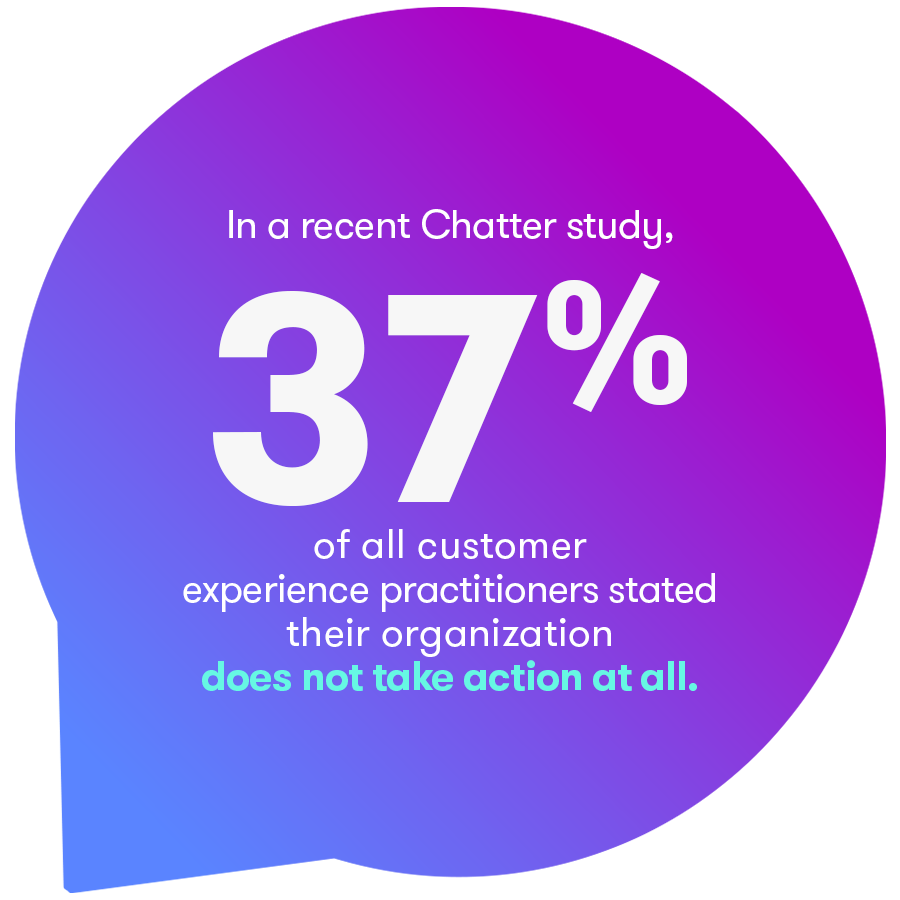BLOG
What’s next for experience management

Over the last few years, brands have experienced significant disruption. And while the prevailing narrative has been centered around the pandemic, brands have actually been shifting their strategies for years.
Pre-pandemic, the narrative was “retail is changing.” Brands were focused on digital transformation: how do we enable our customers to shop online? How well are we connecting to our customers in their shopping channel of choice (mainly online)?
One McKinsey study outlined that only 30% of all digital transformation strategies succeed. Why? Because organizations have always been P&L focused, falling victim to the classic pitfalls that have been hurting their CX for years. Recently, on our podcast, we chatted with a Sales and Customer Experience professional from McKinsey about the six most common CX mistakes – you can check out his episode right here.
When the pandemic hit, brands were impacted with the most significant disruption that has ever occurred: closing their doors for more than a 1-day holiday. The narrative shifted to “retail has changed.” Digital became imperative as stores and location-based businesses lost their ability to sell in-store. As last–mile delivery experiences became strained, stores also adapted by launching curbside pickup services overnight.
Now, as we approach the tail end of the pandemic, the narrative has become “retail continues to change.” Consumers are returning to stores and we’ve seen a sharp increase in store traffic. Consumers are engaging with brands through multiple platforms and the rise of social engagement and consumerism continues to soar.
The narrative breaks down when we start thinking in terms of “changes.” Retail has always been changing, and it will continue to change because retail is a consumer behavior. Our behaviors are constantly evolving. Traditional customer loyalty is dead; we are in the era of brand exploration fueled by digital adaptation, social media adoption, and consumer choice.
Brands have lost their locked-in status at a rapid pace, and their competitive moats have become shallower than ever before. Experience has become the battleground. In a recent study, 74% of customers said they would explore new brands if the current brand’s online purchasing experience wasn’t easy. Another 32% of customers said they would break up with a brand after their first bad experience.

There are 4 key drivers that are impacting experience as the battleground: convenience, ease, personalization, and connectedness. According to research conducted at Chatter, when brands consistently deliver on these pillars, the likelihood of a customer repeating a purchase is 6X greater. Their average ticket size increases by approximately 27%, increasing customer lifetime value in the process.
So, if we know that experience is the battleground and that positive business outcomes are shared by brands that consistently deliver on convenience, ease, personalization, and emotional connectedness … why are brands still failing to get it right?
The answer to that question is: the traditional experience management strategy is outdated. Traditional experience management relies way too heavily on the email-to-web survey. In the last 10 years, the consumer inbox has been saturated with promotional emails, resulting in declining response rates. These declines have presented major challenges for experience practitioners, who need to deliver relevant feedback in quantities that instill confidence regarding sample size.
Lastly, executive leaders have been challenging experience leaders on the value of their programs. Practitioners are struggling every day to connect the dots between customer feedback, behavioral data, and business outcomes, causing executive leaders to ask, “So what?” This leaves experience leaders frustrated and questioning their ability to lead the brand’s experience strategy.
Action is the new experience. Although brands have been facing declining response rates, survey fatigue is not the cause. It’s the lack of action taken to improve the customer experience that is causing customer churn.
Recovering a poor experience, engaging with a customer to save a sale, automating enrollment in loyalty programs, enabling digital teams to take action on digital frictions, and coaching staff in real time are just a few of the actions Chatter is powering for its client brands.
If you want to refresh your experience management approach, you’ll need the right toolkit. Our recent webinar The New Era of Experience Management explores the foundations of what’s next in this space, plus concrete recommendations for brands to bring their XM to the next level.